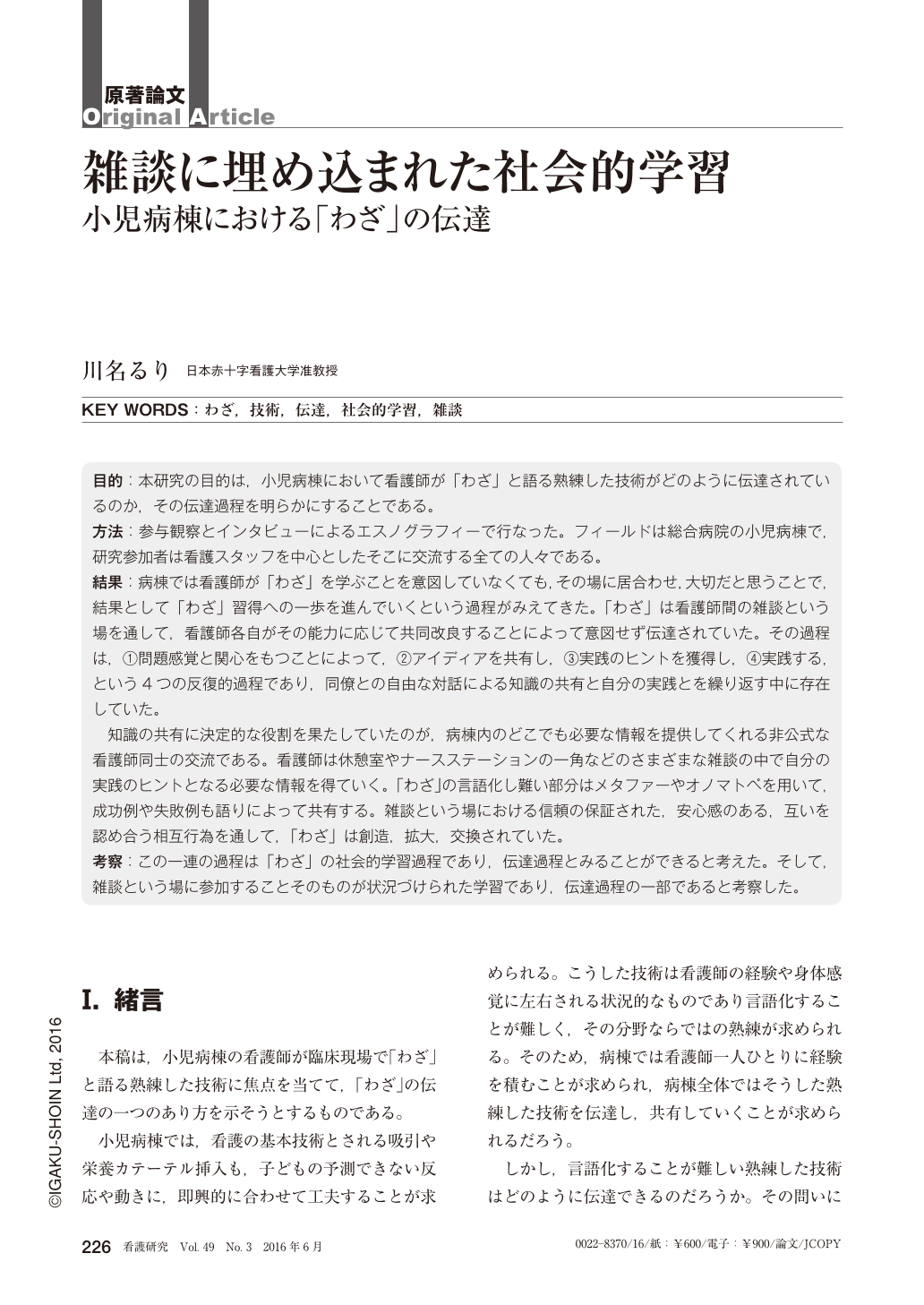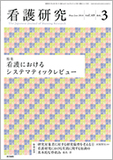Japanese
English
- 有料閲覧
- Abstract 文献概要
- 1ページ目 Look Inside
- 参考文献 Reference
目的:本研究の目的は,小児病棟において看護師が「わざ」と語る熟練した技術がどのように伝達されているのか,その伝達過程を明らかにすることである。
方法:参与観察とインタビューによるエスノグラフィーで行なった。フィールドは総合病院の小児病棟で,研究参加者は看護スタッフを中心としたそこに交流する全ての人々である。
結果:病棟では看護師が「わざ」を学ぶことを意図していなくても,その場に居合わせ,大切だと思うことで,結果として「わざ」習得への一歩を進んでいくという過程がみえてきた。「わざ」は看護師間の雑談という場を通して,看護師各自がその能力に応じて共同改良することによって意図せず伝達されていた。その過程は,①問題感覚と関心をもつことによって,②アイディアを共有し,③実践のヒントを獲得し,④実践する,という4つの反復的過程であり,同僚との自由な対話による知識の共有と自分の実践とを繰り返す中に存在していた。
知識の共有に決定的な役割を果たしていたのが,病棟内のどこでも必要な情報を提供してくれる非公式な看護師同士の交流である。看護師は休憩室やナースステーションの一角などのさまざまな雑談の中で自分の実践のヒントとなる必要な情報を得ていく。「わざ」の言語化し難い部分はメタファーやオノマトペを用いて,成功例や失敗例も語りによって共有する。雑談という場における信頼の保証された,安心感のある,互いを認め合う相互行為を通して,「わざ」は創造,拡大,交換されていた。
考察:この一連の過程は「わざ」の社会的学習過程であり,伝達過程とみることができると考えた。そして,雑談という場に参加することそのものが状況づけられた学習であり,伝達過程の一部であると考察した。
Purpose : The purpose of this study was to describe how skills were communicated and exchanged among nurses in a pediatric ward.
Methods : An ethnographic approach was used with participant observation and interviews.
Findings : Skills were demonstrated to be collectively improved through unintentional daily communication; this type of communication consists of informal interactions among nurses in a casual conversation. In this process, each nurse contributed differently according to his/her respective level of ability. Its repetitive process is as follows: (1) To have concerns and interest; (2) To share ideas; (3) To find hints for practice; and (4) To implement practice. They exchanged stories of success and failure through narratives and used metaphors and onomatopoeia when communicating about certain that are difficult to express verbally. Through these informal interactions among nurses, skills were developed, furthered, and exchanged.
Discussion : This series of processes can be deemed as social learning and as an exchange of skills through communication. The informal interactions among nurses can therefore be considered as a part of this communication process.

Copyright © 2016, Igaku-Shoin Ltd. All rights reserved.


